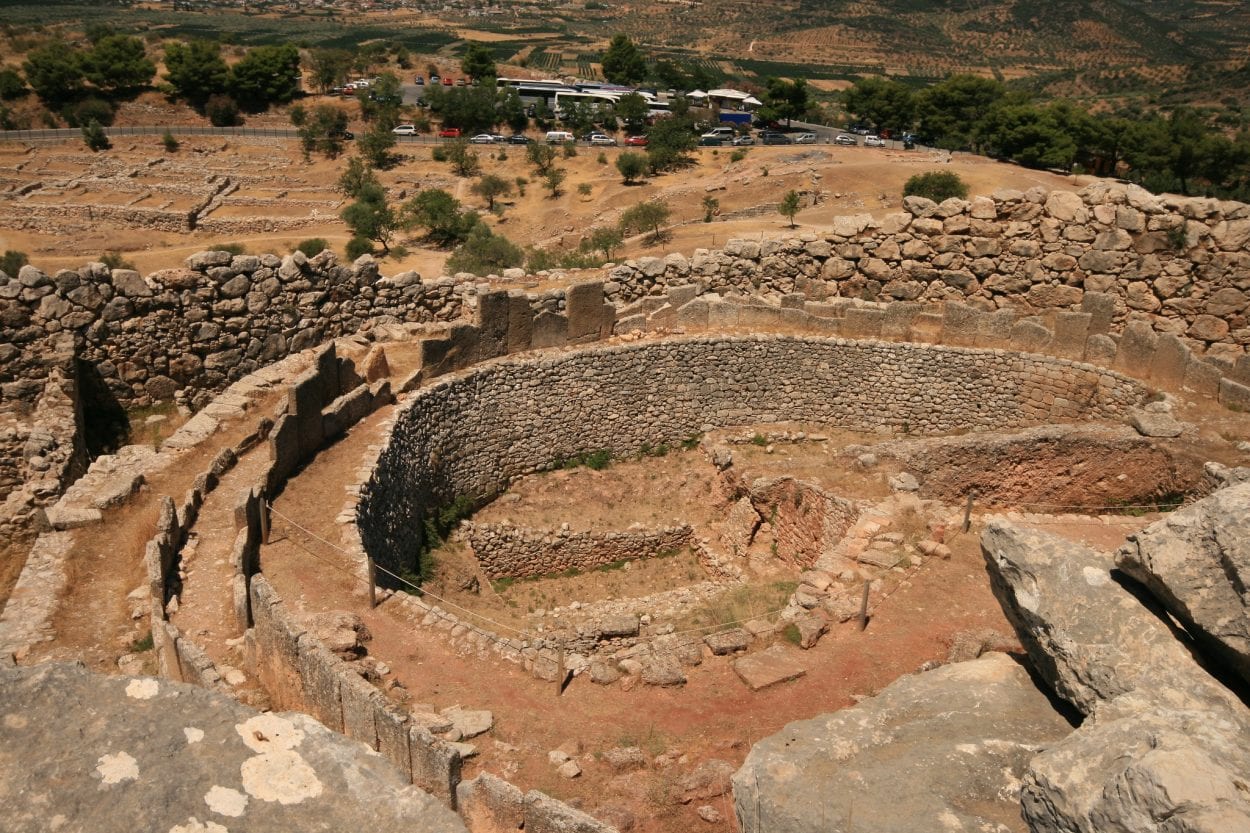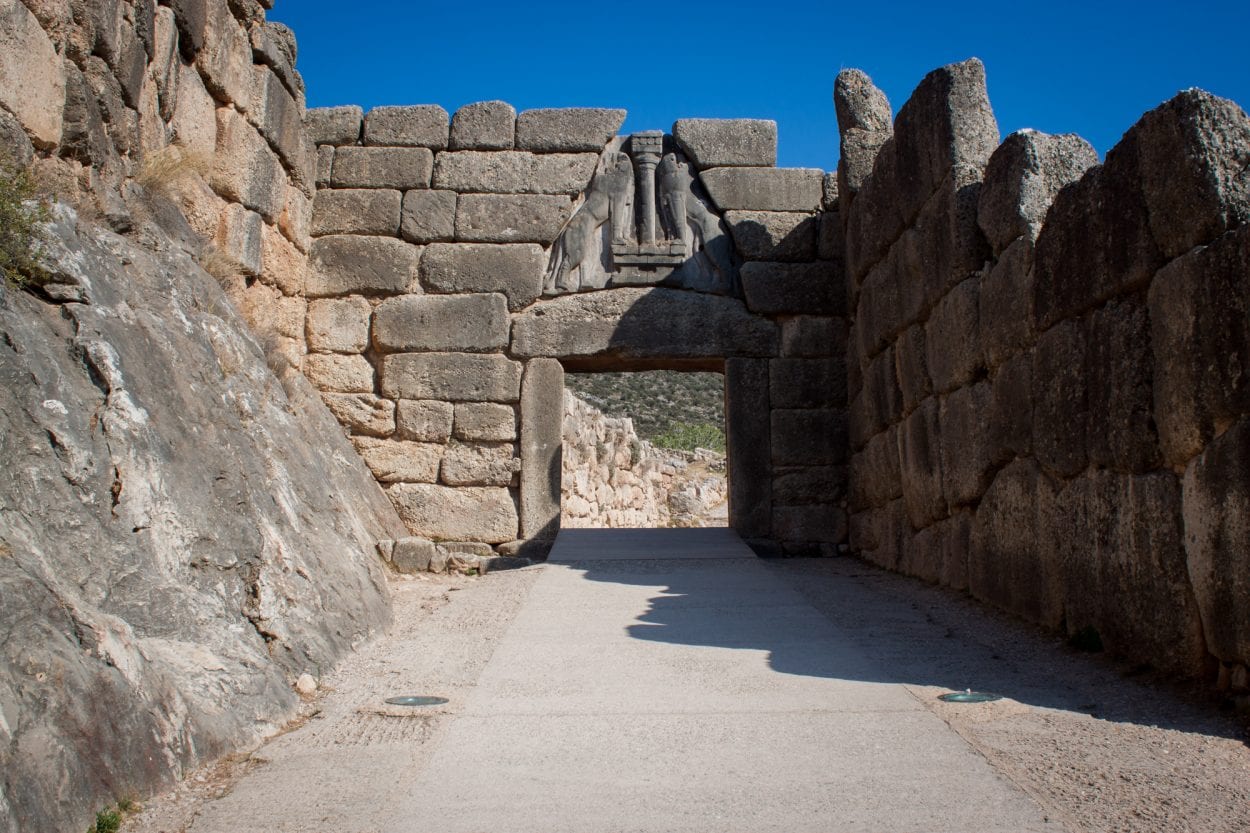Mycenae is an archaeological site and an ancient Mycenaean city, located in the Argolis region of the North-East Peloponnese in Greece.
The Mycenaean civilisation, also called Mycenaean Greece is defined by a period of advanced urban organisation during the Bronze Age, with several innovations in the fields of engineering, architecture, and military infrastructure that was dominated by a warrior elite society.
According to mythology, Perseus (son of the Greek god Zeus and Danae) instructed the Cyclopes (one-eyed giants) to build the walls of Mycenae with “stones no human could lift”. The city was also the supposed seat of Agamemnon, the mythological King of Árgos or Mykḗnē (Mycenae), who led the coalition of Greek states against the Trojans in Homer’s Iliad.
The earliest evidence of occupation at Mycenae dates from the Early Neolithic (5000-4000BC), with traces of prehistoric settlement through the Early Helladic (3200-2000BC), and the Middle Helladic (2000-1550BC) periods on a naturally fortified position between the sloping hills of Profitis Ilias and Mount Sara.

Most of the city walls and monuments were constructed from 1350 BC, in a style referred to as “Cyclopean” (because the blocks were so large only the Cyclopes could move them).
The city was centred on a hall called a magaron, where several phases of palaces were situated on the acropolis, consisting of a columned porch, vestibule, and a main chamber, surrounded by shrines, storerooms, workshops, and armouries.
The main access route to Mycenae was through the Lion Gate (named after a lion sculpture), a grand entrance in the Cyclopean walls which surrounded high-status dwellings, shrines, and a funerary enclosure called the Grave Circle where the Mycenaean elite was buried in shaft graves.

The residential area was located outside the city walls, with various shaped tholos (or “beehive”) tombs dotted in the landscape, including the Treasury of Atreus, also called the Tomb of Agamemnon excavated into the side of Panagitsa Hill (although there’s probably no relationship with either Atreus or Agamemnon).
By 1200BC Mycenaean dominance was in decline, with the citadel of Mycenae being mostly abandoned after a series of fires during a turbulent time known as the Bronze Age collapse. This period also saw the destruction of other Mycenaean strongholds almost simultaneously in the Greek mainland and beyond.
The attributing factor behind the destruction of Mycenae has been contested amongst many scholarly circles, with some academics suggesting civil strife and social upheaval, environmental factors such as drought and earthquakes, or invasion by the Dorians, Heraclids, or the so-called “Sea Peoples”.
Mycenae was briefly reoccupied in the Hellenistic period by the people of Argos who founded a settlement on the Mycenae hill. The inhabitants repaired some of the city walls and constructed a theatre (located over the Tomb of Clytemnestra). The site was subsequently abandoned, and by the Roman period in Greece, its ruins had become an ancient tourist attraction.
Header Image Credit : Daniel Skoog – CC BY-SA 2.0







